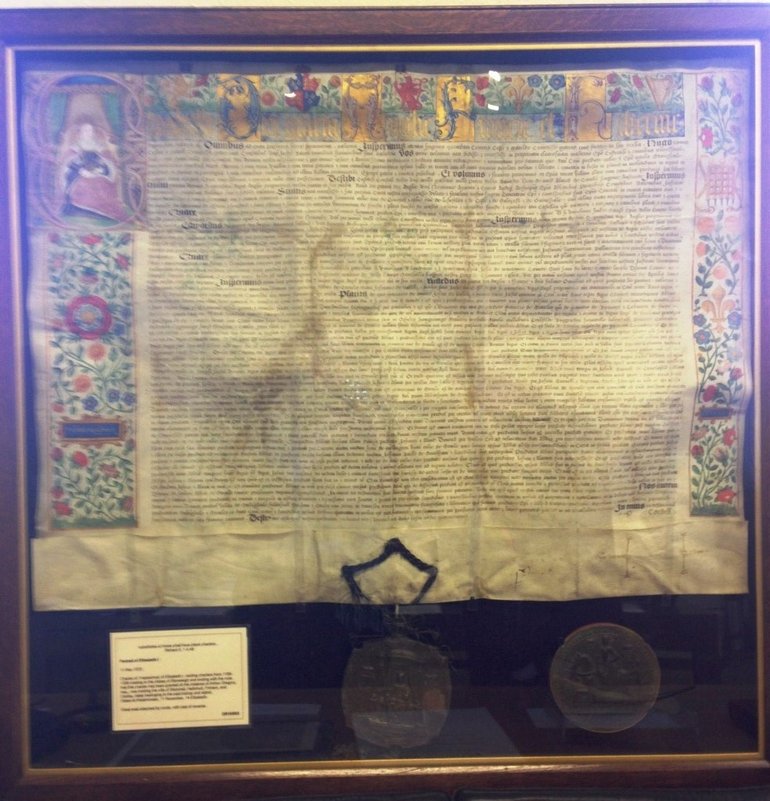This week marks the accession of Queen Elizabeth I to the throne. On the 17th November 1558, having just turned 25 years old, Elizabeth Tudor became queen of England after the death of her sister Queen Mary I. For such a young woman she certainly took to the crown and made her mark on history — 455 years on from her ascendancy, I went in search of Elizabeth in the collections here at the Shakespeare Birthplace Trust.

The first item I came across was this magnificent Charter from 1572. It confers rights to the Stoneleigh estate and is dated from Westminster on the 11 November, '14 Elizabeth' (in the fourteenth year of her reign). From the charter dangles the weighty seal of the Queen stamped with an elaborate full length portrait. The charter is also framed with a second portrait seal of Elizabeth.
Looking at these two portraits side-by-side recalled how she wanted to be seen by the people. Her campaign of clever image-crafting made sure that she was viewed as a stately embodiment of the country, the ‘body politic’ as seen on the charter's seal (1), and as the person Elizabeth Tudor (2). This second aspect, the ‘body natural’ we see more on the second seal. A bit more down to earth — for a queen, anyway.


A slightly more personal brush with the Queen came from this document signed by her own hand. It is a warrant ordering the delivery of a new, official tabard for Ralph Brooke, Esquire when he became York Herald.

Her signature is so large and fanciful. Some of the curlicues verge on being doodles. Was she bored of signing official documents that day and trying to make a bit of fun out of the whole thing? Was she terribly excited about granting Ralph Brooke a tabard and thought it warranted a few extra loop-de-loops? Maybe being the queen simply lends itself to having an overly grandiose signature.

Finally, there is this humble shoe-horn inscribed with a Tudor rose and the words ‘O Lord, save Queen Elizabeth’. This simple, domestic object is such a nice piece of evidence about displaying loyalty and love for the monarch being important in all areas of life at the time — a gentle reminder wedged into your mind as you wrestle into your shoes in the morning.
